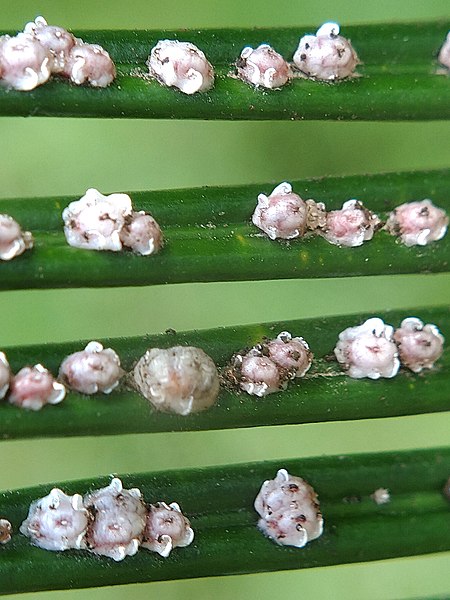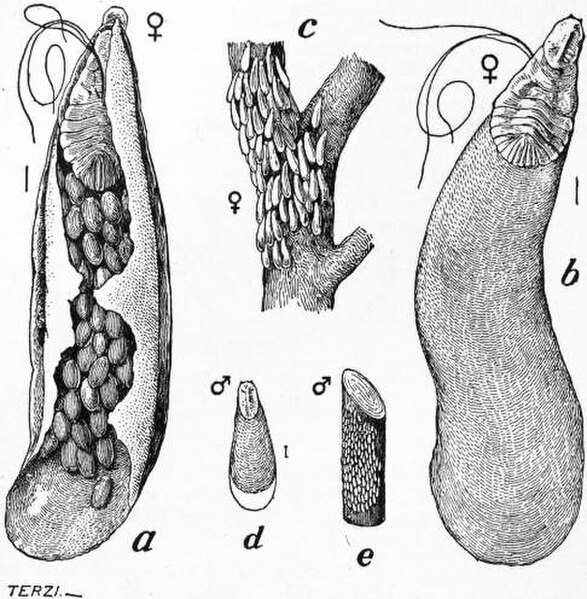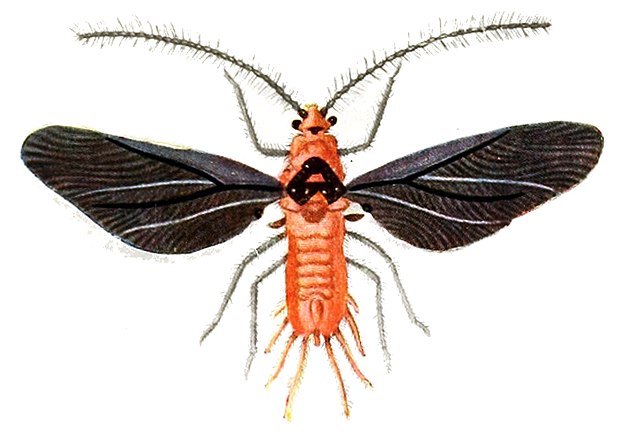Kermes is a red dye derived from the dried bodies of the females of a scale insect in the genus Kermes, primarily Kermes vermilio. The Kermes insects are native in the Mediterranean region and are parasites living on the sap of the host plant, the Kermes oak and the Palestine oak.
The Coronation Mantle of Roger II of Sicily, silk dyed with kermes and embroidered with gold thread and pearls. Royal Workshop, Palermo, Sicily, 1133–34. Kunsthistorisches Museum, Vienna.
Scale insects are small insects of the order Hemiptera, suborder Sternorrhyncha. Of dramatically variable appearance and extreme sexual dimorphism, they comprise the infraorder Coccomorpha which is considered a more convenient grouping than the superfamily Coccoidea due to taxonomic uncertainties. Adult females typically have soft bodies and no limbs, and are concealed underneath domed scales, extruding quantities of wax for protection. Some species are hermaphroditic, with a combined ovotestis instead of separate ovaries and testes. Males, in the species where they occur, have legs and sometimes wings, and resemble small flies. Scale insects are herbivores, piercing plant tissues with their mouthparts and remaining in one place, feeding on sap. The excess fluid they imbibe is secreted as honeydew on which sooty mold tends to grow. The insects often have a mutualistic relationship with ants, which feed on the honeydew and protect them from predators. There are about 8,000 described species.

Scale insect
Life-cycle of the apple scale, Mytilaspis pomorum. a) underside of scale showing female and eggs, x24 b) scale upperside, x24 c) female scales on twig d) male scale, x12 e) male scales on twig
Apple scale. a) male, with legs and wings b) foot of male c) larva, x20 d) antenna of larva e) immobile female (removed from scale)
A winged male Drosicha sp.





